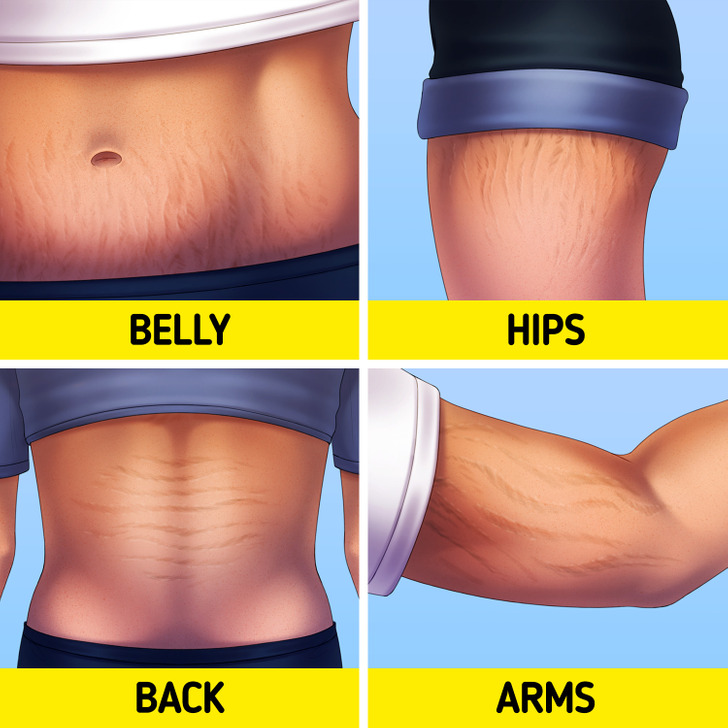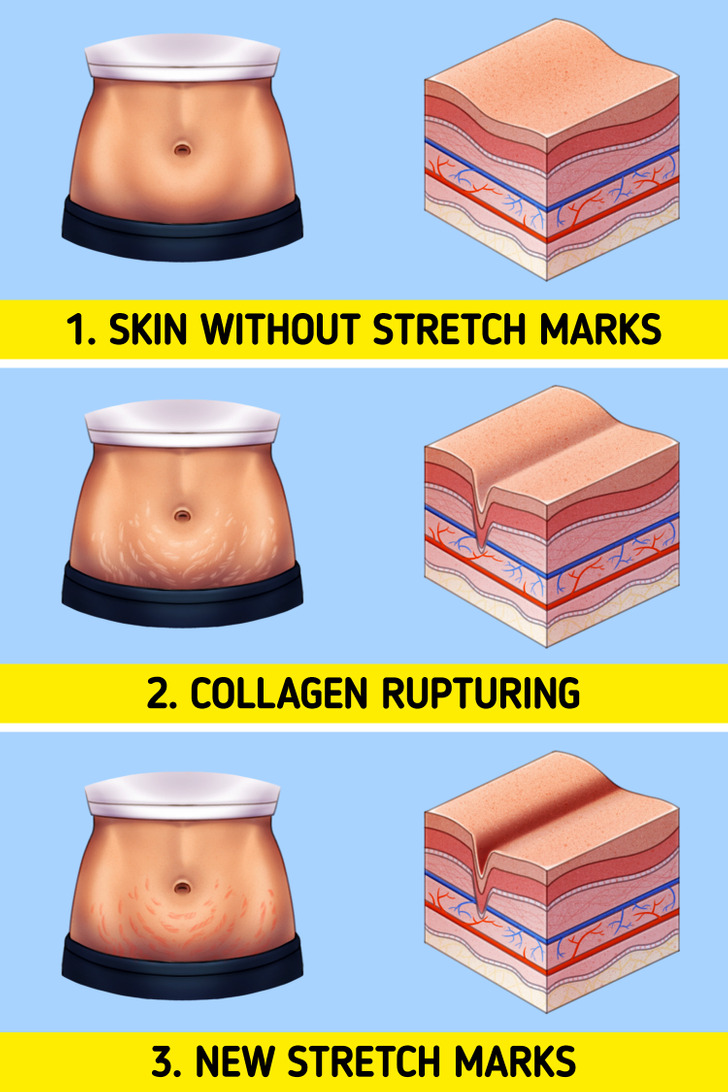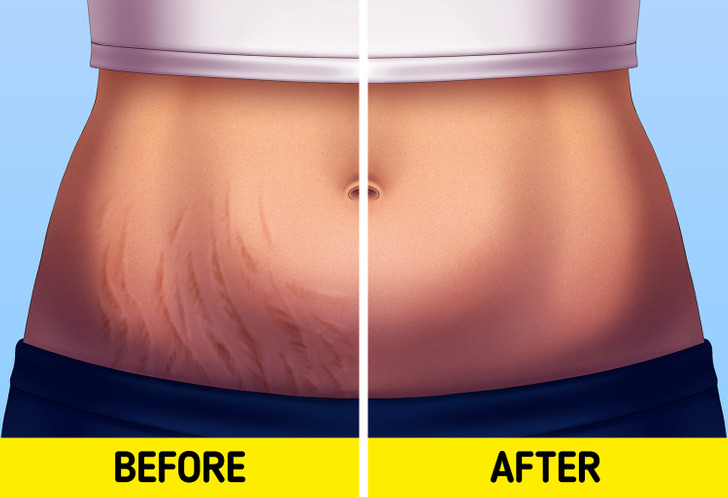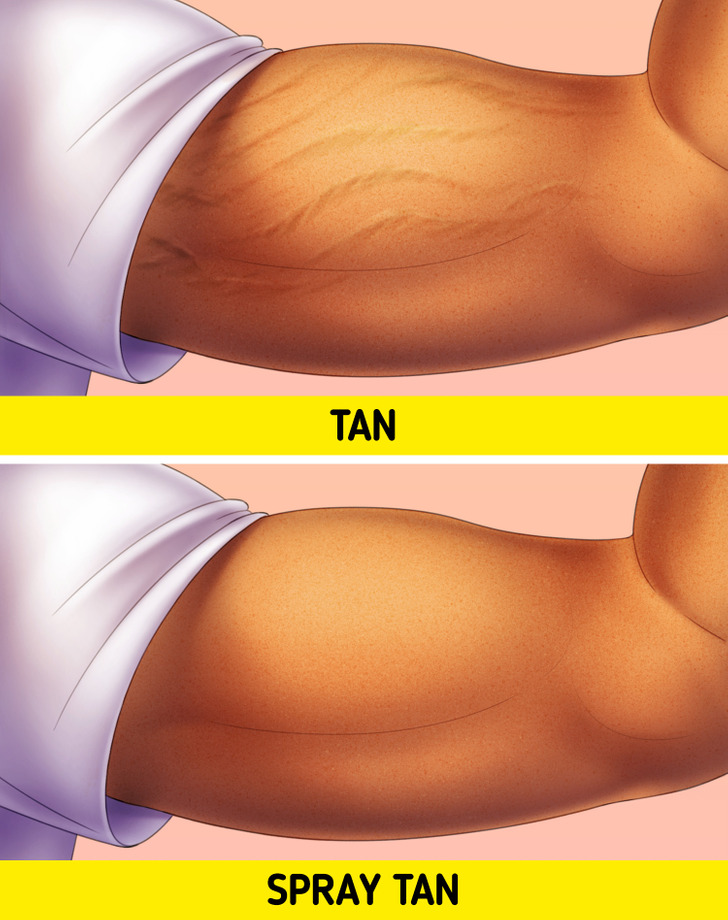A Simple Definition of Stretch Marks, and How to Get Rid of Them
5-Minute Crafts would like to tell you about what stretch marks are, why they are formed, and how to get rid of them.
❗ This article is for information only. You should turn to a doctor to select the best method of stretch mark removal.
What do stretch marks look like?

Stretch marks are streaks that look like scars. They can appear on the belly, chest, hips, arms, back, and other parts of the body. When stretch marks form, the color of the lines can be red, purple, pink, reddish, or dark brown, depending on the skin tone. Over time, the color fades and stretch marks become less visible.
New stretch marks may feel slightly raised and itchy. After a while, the narrowest streaks begin to sink beneath your skin. If you run your finger over a mature stretch mark, you may feel a slight depression.
Why stretch marks form

Stretch marks often appear after a sudden increase in height or weight. The skin can’t stretch enough and quickly adapt to changes, which causes the collagen and elastin that support the skin to rupture. As these ruptures heal, stretch marks may appear.
Most often, stretch marks appear:
- During pregnancy
- During growth spurts that occur during puberty
- With rapid muscle growth due to weight training
- With rapid weight loss or gain
- After breast enlargement surgery
Risk factors for stretch mark appearance:
- Being female
- Excess weight
- Existing stretch marks
- Stretch marks in the family
- Taking anabolic steroids
- Applying a corticosteroid to the skin for a long time
- Genetic diseases: Cushing’s syndrome, Marfan syndrome, or Ehlers-Danlos syndrome
How to treat stretch marks

Stretch marks are not a disease and don’t require treatment. Over time, they may fade and become less visible.
However, if you are concerned about the look of your skin or if stretch marks cover large areas of your body, it makes sense to seek the advice of a specialist. Your doctor can help determine the cause of your stretch marks and discuss treatment options with you. They will also suggest methods for the aesthetic correction of stretch marks. These include:
- Retinoid creams and lotions can help restore collagen levels in the skin and make stretch marks less visible. However, these creams can’t be prescribed during pregnancy or breastfeeding due to possible side effects on the baby.
- Medical procedures, such as lasers, ultrasound, radiofrequency, and other therapies can stimulate collagen production.
- Microdermabrasion and chemical peels help remove dead and damaged skin cells, stimulate skin renewal and, as a result, make stretch marks less visible.
- Cosmetic surgery: This method includes plastic surgery (such as a tummy tuck), during which excess skin can be removed along with stretch marks. However, these operations can leave scars, and they are often painful and costly.
❗ Remember that only a doctor can prescribe adequate treatment, taking into account your situation and individual contraindications. Talk to a specialist to choose the most appropriate method or a combination of them.
How to remove stretch marks yourself

There are many creams, lotions, and other skin products sold in cosmetics stores that claim to prevent or treat stretch marks. Unfortunately, there is little evidence that these products actually work. Various oils and butters (almond oil, olive oil, shea butter, and cocoa butter) also don’t have any effect on stretch marks.
Only the medical methods that we described above can reduce or completely remove stretch marks. Of the available products outside the doctor’s office, only a self-tanner can help: it will camouflage stretch marks and make them less visible.
Remember that a self-tanner should be used to camouflage stretch marks. A natural tan won’t help get rid of stretch marks — on the contrary, it will make them more noticeable because stretch marks don’t tan.
It’s not always possible to prevent the appearance of new stretch marks. The best way to lower your chances is to maintain a healthy weight, even during pregnancy. Discuss your physical activity and nutrition plan with your doctor.